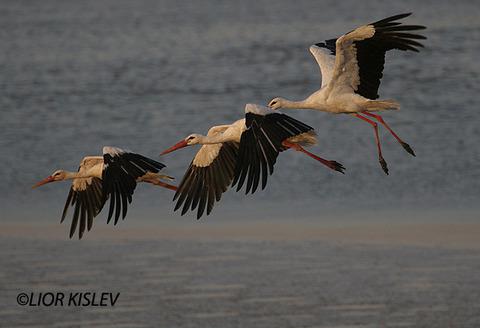当前位置:
X-MOL 学术
›
Funct. Ecol.
›
论文详情
Our official English website, www.x-mol.net, welcomes your
feedback! (Note: you will need to create a separate account there.)
Causes and consequences of facultative sea crossing in a soaring migrant
Functional Ecology ( IF 4.6 ) Pub Date : 2020-04-01 , DOI: 10.1111/1365-2435.13539 Paolo Becciu 1 , Shay Rotics 2 , Nir Horvitz 2 , Michael Kaatz 3 , Wolfgang Fiedler 4, 5 , Damaris Zurell 6, 7 , Andrea Flack 4, 5 , Florian Jeltsch 8, 9 , Martin Wikelski 4, 5 , Ran Nathan 2 , Nir Sapir 1
Functional Ecology ( IF 4.6 ) Pub Date : 2020-04-01 , DOI: 10.1111/1365-2435.13539 Paolo Becciu 1 , Shay Rotics 2 , Nir Horvitz 2 , Michael Kaatz 3 , Wolfgang Fiedler 4, 5 , Damaris Zurell 6, 7 , Andrea Flack 4, 5 , Florian Jeltsch 8, 9 , Martin Wikelski 4, 5 , Ran Nathan 2 , Nir Sapir 1
Affiliation

|
Studying the causes and consequences of route selection in animal migration is important for understanding the evolution of migratory systems and how they may be affected by environmental factors at various spatial and temporal scales. One key decision during migration is whether to cross ‘high transport cost’ areas or to circumvent them. Soaring birds may face this choice when encountering waterbodies where convective updrafts are weak or scarce. Crossing these waterbodies requires flying using energetically costly flapping flight, while circumventing them over land permits energetically cheap soaring. We tested how several atmospheric factors (e.g. wind, thermal uplift) and geographic, seasonal and state‐related factors (sex and age) affected route selection in migrating white storks Ciconia ciconia. We used 196 GPS tracks of 70 individuals either crossing or circumventing the north‐easternmost section of the Mediterranean Sea, over Iskenderun Bay in southern Turkey. We found that westward and southward winds promoted a cross‐bay journey in spring and autumn, respectively, acting as tailwinds. Also, overall weaker winds promoted a sea crossing in spring. Sea crossing was associated with flapping flight and higher values of overall dynamic body acceleration and resulted in higher ground speed than travel over land. The combined environmental conditions and the effects of route selection on movement‐related energy costs and speed were likely responsible for an increase in the time spent flying and distance travelled of migrating storks that decided to cross the bay during spring. Notably, daily travel distances of spring migrants crossing the bay were 60 km longer than those of land‐detouring birds, allowing them to reach their destination faster but likely incurring a higher energetic flight cost. No such benefit was found during autumn. Our findings confirm that atmospheric conditions can strongly affect bird route selection. Consequently, migration timing, speed and movement‐related energy expenditure differed considerably between the two migratory seasons and the two route choices, highlighting a time‐energy trade‐off in the migration of white storks. A free plain language summary can be found within the Supporting Information of this article.
中文翻译:

飙升的移民兼性跨海的原因和后果
研究动物迁徙路线选择的原因和后果对于理解迁徙系统的演变以及它们如何受到不同空间和时间尺度的环境因素的影响非常重要。迁移过程中的一个关键决定是跨越“高运输成本”地区还是绕过它们。当遇到对流上升气流微弱或稀少的水体时,翱翔的鸟类可能会面临这种选择。穿越这些水体需要使用能量昂贵的扑翼飞行,而在陆地上绕过它们则允许能量廉价的飙升。我们测试了几种大气因素(例如风、热上升)和地理、季节性和状态相关因素(性别和年龄)如何影响迁徙白鹳 Ciconia ciconia 的路线选择。我们使用了 70 个人的 196 条 GPS 轨迹,他们穿越或绕过了地中海最东北部的土耳其南部伊斯肯德伦湾。我们发现,西风和南风分别促进了春季和秋季的跨湾旅程,起到了顺风的作用。此外,整体较弱的风促进了春季的跨海。跨海与扑翼飞行和更高的整体动态身体加速度值有关,并导致比在陆地上行驶更高的地速。综合环境条件以及路线选择对运动相关能源成本和速度的影响可能是决定在春季穿越海湾的迁徙鹳飞行时间和行进距离增加的原因。尤其,穿越海湾的春季候鸟的每日旅行距离比陆路迂回鸟类长 60 公里,这使它们能够更快地到达目的地,但可能会产生更高的精力充沛的飞行成本。在秋季没有发现这样的好处。我们的研究结果证实,大气条件可以强烈影响鸟类路线选择。因此,两个迁徙季节和两种路线选择之间的迁徙时间、速度和运动相关的能量消耗差异很大,突出了白鹳迁徙中的时间-能量权衡。可以在本文的支持信息中找到免费的简明语言摘要。在秋季没有发现这样的好处。我们的研究结果证实,大气条件可以强烈影响鸟类路线选择。因此,两个迁徙季节和两种路线选择之间的迁徙时间、速度和运动相关的能量消耗差异很大,突出了白鹳迁徙中的时间-能量权衡。可以在本文的支持信息中找到免费的简明语言摘要。在秋季没有发现这样的好处。我们的研究结果证实,大气条件可以强烈影响鸟类路线选择。因此,两个迁徙季节和两种路线选择之间的迁徙时间、速度和运动相关的能量消耗差异很大,突出了白鹳迁徙中的时间-能量权衡。可以在本文的支持信息中找到免费的简明语言摘要。
更新日期:2020-04-01
中文翻译:

飙升的移民兼性跨海的原因和后果
研究动物迁徙路线选择的原因和后果对于理解迁徙系统的演变以及它们如何受到不同空间和时间尺度的环境因素的影响非常重要。迁移过程中的一个关键决定是跨越“高运输成本”地区还是绕过它们。当遇到对流上升气流微弱或稀少的水体时,翱翔的鸟类可能会面临这种选择。穿越这些水体需要使用能量昂贵的扑翼飞行,而在陆地上绕过它们则允许能量廉价的飙升。我们测试了几种大气因素(例如风、热上升)和地理、季节性和状态相关因素(性别和年龄)如何影响迁徙白鹳 Ciconia ciconia 的路线选择。我们使用了 70 个人的 196 条 GPS 轨迹,他们穿越或绕过了地中海最东北部的土耳其南部伊斯肯德伦湾。我们发现,西风和南风分别促进了春季和秋季的跨湾旅程,起到了顺风的作用。此外,整体较弱的风促进了春季的跨海。跨海与扑翼飞行和更高的整体动态身体加速度值有关,并导致比在陆地上行驶更高的地速。综合环境条件以及路线选择对运动相关能源成本和速度的影响可能是决定在春季穿越海湾的迁徙鹳飞行时间和行进距离增加的原因。尤其,穿越海湾的春季候鸟的每日旅行距离比陆路迂回鸟类长 60 公里,这使它们能够更快地到达目的地,但可能会产生更高的精力充沛的飞行成本。在秋季没有发现这样的好处。我们的研究结果证实,大气条件可以强烈影响鸟类路线选择。因此,两个迁徙季节和两种路线选择之间的迁徙时间、速度和运动相关的能量消耗差异很大,突出了白鹳迁徙中的时间-能量权衡。可以在本文的支持信息中找到免费的简明语言摘要。在秋季没有发现这样的好处。我们的研究结果证实,大气条件可以强烈影响鸟类路线选择。因此,两个迁徙季节和两种路线选择之间的迁徙时间、速度和运动相关的能量消耗差异很大,突出了白鹳迁徙中的时间-能量权衡。可以在本文的支持信息中找到免费的简明语言摘要。在秋季没有发现这样的好处。我们的研究结果证实,大气条件可以强烈影响鸟类路线选择。因此,两个迁徙季节和两种路线选择之间的迁徙时间、速度和运动相关的能量消耗差异很大,突出了白鹳迁徙中的时间-能量权衡。可以在本文的支持信息中找到免费的简明语言摘要。











































 京公网安备 11010802027423号
京公网安备 11010802027423号